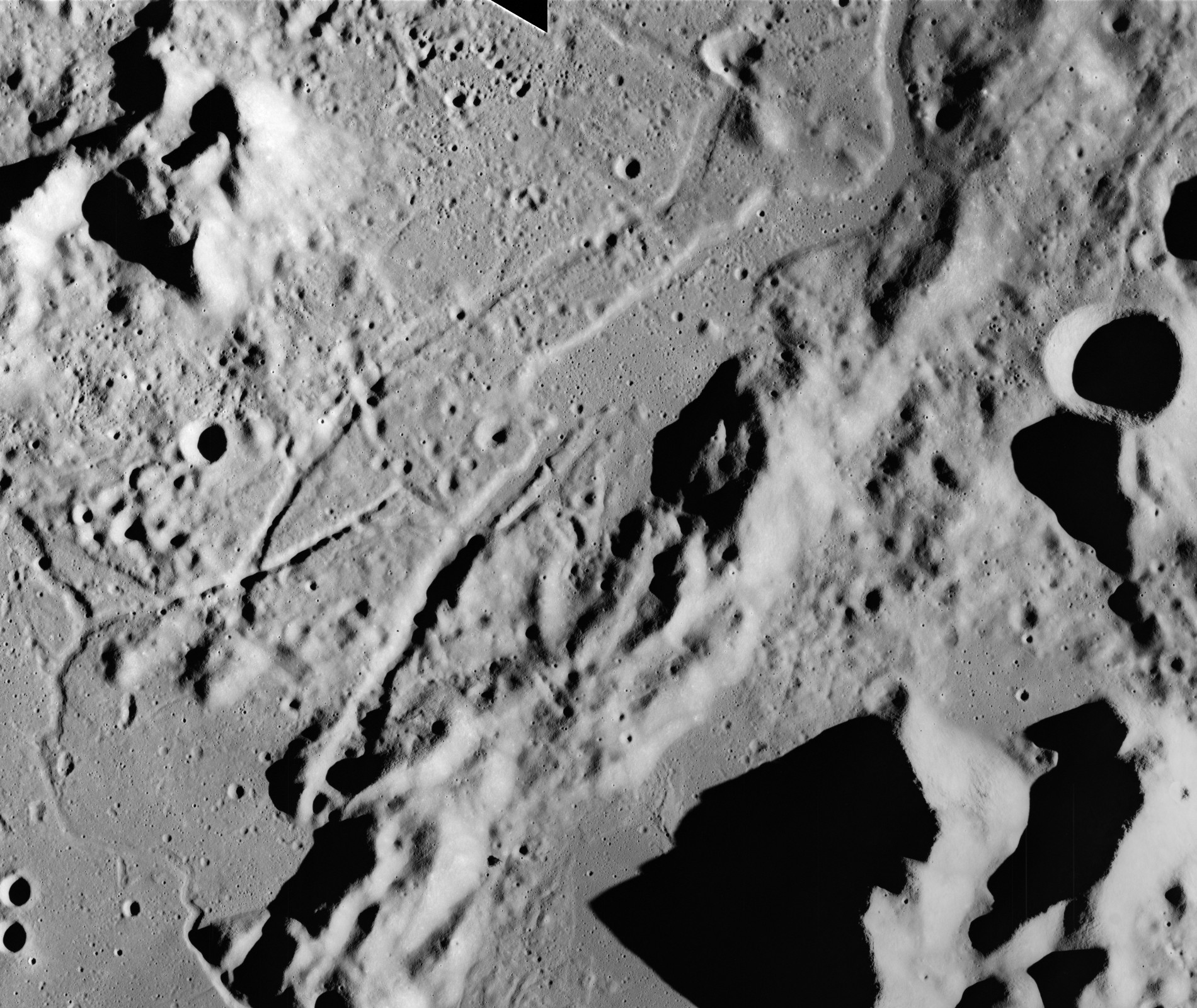|
Rimae Fresnel
Rimae Fresnel is a 90km-long arcuate escarpment on the Moon at . Both the escarpment and the nearby Promontorium Fresnel were named after the French physicist Augustin-Jean Fresnel Augustin-Jean Fresnel (10 May 1788 – 14 July 1827) was a French civil engineer and physicist whose research in optics led to the almost unanimous acceptance of the wave theory of light, excluding any remnant of Newton's corpuscular th .... Accessed December 19, 2017 August 2002. Archived February 5, 2012. References External links Rimae Fresnel at the Moon Wiki [...More Info...] [...Related Items...] OR: [Wikipedia] [Google] [Baidu] |
Arcuate
''Arcuate'' (Latin for "curved") can refer to: Anatomy * Arcuate fasciculus * Arcuate line (other) * Arcuate artery (other), several arteries * Arcuate nucleus * Arcuate nucleus (medulla) * Arcuate ligaments of the diaphragm * Arcuate vein * Arcuate vessels of uterus * Internal arcuate fibers of the brain Other * Arcuate architecture, employing its arches and beams * Arcuate delta, a type of river delta * Arcuate pocket a type of pocket used in clothing, especially jeans made by Levi Strauss Levi Strauss (; born Löb Strauß ; February 26, 1829 – September 26, 1902) was a German-born American businessman who founded the first company to manufacture blue jeans. His firm of Levi Strauss & Co. (Levi's) began in 1853 in San Francisco ... * Arcuate rack, a curved rack gear {{disambig ... [...More Info...] [...Related Items...] OR: [Wikipedia] [Google] [Baidu] |
Escarpment
An escarpment is a steep slope or long cliff that forms as a result of faulting or erosion and separates two relatively level areas having different elevations. The terms ''scarp'' and ''scarp face'' are often used interchangeably with ''escarpment''. Some sources differentiate the two terms, with ''escarpment'' referring to the margin between two landforms, and ''scarp'' referring to a cliff or a steep slope. In this usage an escarpment is a ridge which has a gentle slope on one side and a steep scarp on the other side. More loosely, the term ''scarp'' also describes a zone between a coastal lowland and a continental plateau which shows a marked, abrupt change in elevation caused by coastal erosion at the base of the plateau. Formation and description Scarps are generally formed by one of two processes: either by differential erosion of sedimentary rocks, or by movement of the Earth's crust at a geologic fault. The first process is the more common type: the escarpment is a t ... [...More Info...] [...Related Items...] OR: [Wikipedia] [Google] [Baidu] |
Promontorium Fresnel
Promontorium Fresnel (Latin for "Cape Fresnel") is a headland on the near side of the Moon. It is located at the northern end of the Montes Apenninus and separates the lunar mares of Mare Serenitatis and Mare Imbrium. Just west of the mountainous cape is Rimae Fresnel. Both features were named after the French physicist Augustin-Jean Fresnel. Its coordinates In geometry, a coordinate system is a system that uses one or more numbers, or coordinates, to uniquely determine the position of the points or other geometric elements on a manifold such as Euclidean space. The order of the coordinates is sig ... are . References External links Promontorium Fresnelat the Moon WikiLunar Orbiter images of Promontorium Fresnel* Mountains on the Moon {{Mountains on the Moon ... [...More Info...] [...Related Items...] OR: [Wikipedia] [Google] [Baidu] |
Augustin-Jean Fresnel
Augustin-Jean Fresnel (10 May 1788 – 14 July 1827) was a French civil engineer and physicist whose research in optics led to the almost unanimous acceptance of the wave theory of light, excluding any remnant of Isaac Newton, Newton's corpuscular theory of light, corpuscular theory, from the late 1830s until the end of the 19th century. He is perhaps better known for inventing the Catadioptric system, catadioptric (reflective/refractive) Fresnel lens and for pioneering the use of "stepped" lenses to extend the visibility of lighthouses, saving countless lives at sea. The simpler Dioptrics, dioptric (purely refractive) stepped lens, first proposed by Georges-Louis Leclerc, Comte de Buffon, Count Buffon and independently reinvented by Fresnel, is used in screen magnifying glass, magnifiers and in condenser lenses for overhead projectors. By expressing Christiaan Huygens, Huygens's principle of secondary waves and Thomas Young (scientist), Young's principle of interference ( ... [...More Info...] [...Related Items...] OR: [Wikipedia] [Google] [Baidu] |


